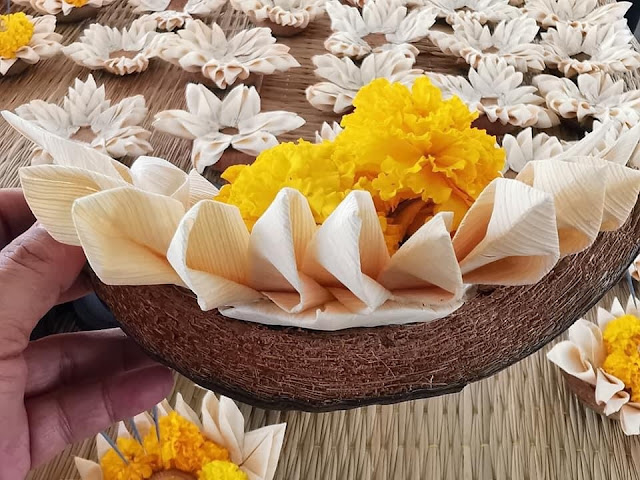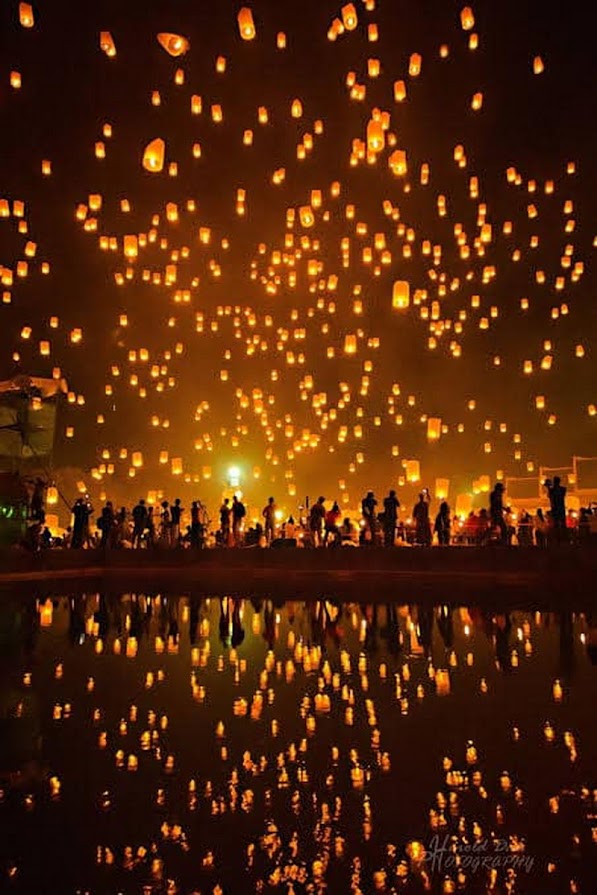Beliefs about Loi Krathong Day: Uncovering Their Connection to the Yi Peng Lantern Festival
Discover the Rich Cultural Significance and Traditions of Loi Krathong Day
Loi Krathong Day is a time-honored Thai celebration with a myriad of beliefs and traditions that provide a deeper understanding of the country's cultural heritage. In this article, we will explore the beliefs surrounding Loi Krathong Day and their connection to the Yi Peng Lantern Festival.
In the northern region of Thailand, Loi Krathong Day is referred to as "Yi Peng." This term signifies the act of making merit on the full moon day of the second month, according to the Lanna calendar, which corresponds to the twelfth month in the Thai calendar. Yi Peng is also known as "Kite Hom" or "Smoke Kite," a tradition that involves using a thin cloth to collect smoke beneath floating lanterns. These lanterns are released into the air as a way to honor Phra Upakut, a revered figure believed to have practiced spells in the depths of the sea or at the sea's navel. This belief is also shared by the Burmese people, highlighting the cultural connections between these neighboring countries.
Beliefs about Loi Krathong Day:
- Loi Krathong as a way to seek forgiveness from Phra Mae Ganga: Loi Krathong Day involves floating a beautifully decorated krathong on the river as a means to ask for forgiveness from Phra Mae Ganga, the guardian of the Ganges River and all water sources around the world. This ritual acknowledges the benefits humans receive from water and seeks atonement for polluting it with garbage and sewage.
- Loi Krathong as a form of worship to the gods: The festival is influenced by Brahmanism and is believed to honor gods such as Shiva, Vishnu, and Brahma. The floating lanterns are also used to pay tribute to the Buddha's footprint on the sandy beach of the Nammada River and celebrate his return from the Heavenly Tavatimsa after delivering a sermon to his mother.
- Cutting hair and nails for the Krathong: An ancient belief suggests that placing cut hair and nails into the krathong before releasing it into the river symbolizes casting away misfortune, bad luck, and personal suffering.
- Placing money in the Krathong: The belief of putting money inside the krathong symbolizes inviting wealth and financial prosperity into one's life.
- Upside-down Krathong: Many people fear their krathong flipping over, as it is believed to bring bad luck or misfortune. However, this belief is more personal, as overturned krathongs can be caused by strong currents or winds.
- Bathing under the moonlight: On Loi Krathong night, it is customary to bathe under the moonlight at midnight, as the full moon is believed to wash away bad luck and bring prosperity. This practice is also said to make one's skin as soft as moonlight.
The beliefs associated with Loi Krathong Day are intricately connected to the Yi Peng Lantern Festival, celebrated in the northern region of Thailand. Both festivals share themes of forgiveness, cleansing, and renewal. The Yi Peng Sky Lantern Festival, also known as "Kite Hom" or "Smoke Kite," involves releasing lanterns into the air to worship Phra Upakut, a revered figure believed to have practiced spells at the depths of the sea. By exploring the beliefs of Loi Krathong Day, we can better appreciate the beautiful bond between these two captivating Thai celebrations.


ไม่มีความคิดเห็น:
แสดงความคิดเห็น